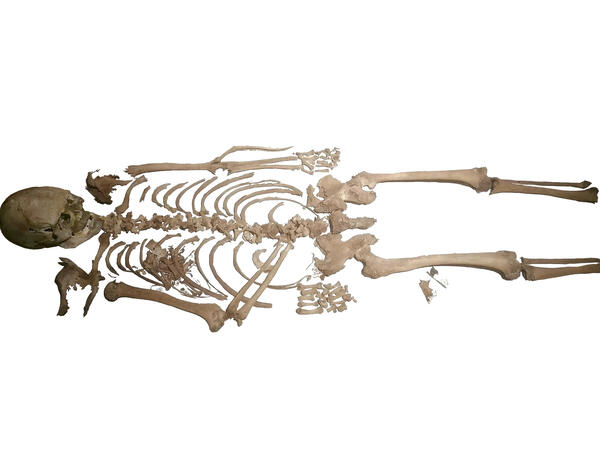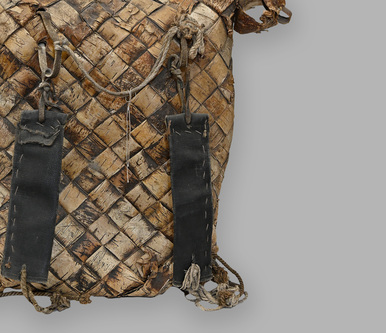The exhibition of the Polyarny Museum of History and Local Lore presents finds from burial No. 13, excavated at the Kola Oleneostrovsky grave field by the Kola archaeological expedition of the Institute for the History of Material Culture of the Russian Academy of Sciences in 2002.
The skull was found in a paired burial of an adult man and an infant. The man was lying on his back, in an extended position, with his head facing northeast. The skeleton of the child was lying on its back on the right half of the man’s chest; the face of the skull was strongly tilted to the torso. The degree of kinship between the man and the infant is unknown. They were likely close relatives. The child was no older than one and a half months. A fistula was found on the child’s lower jaw, which may have been the cause of death. The man was about 50 years old. His height was 157 cm. Two of his cervical vertebrae were fused together, which prevented his head from turning freely. His left index finger was broken and healed bent at 90-degree angle when he was a child. The man suffered from spinal issues — both due to increased loads on the spinal column, and due to senile changes of the skeleton.
The buried lay in an oval-shaped keryozha boat, closed with a wooden lid. The joints between the sides and the lid were tarred. A bone dagger, a beaver incisor, two bone needles, a bone awl, an object of unclear purpose, a hollow horn handle, a rod with a deer’s head, two shells, a fragment of ceramics and a bird bone were laid into the grave.
The restored sculptural image
of this man is presented in a glass case near the skull. The anthropological
reconstruction of the man from burial No. 13 was done by Ravil Galeev, an
employee of the Institute of Ethnology and Anthropology of the Russian Academy
of Sciences in Moscow. The study of bone remains found at the grave field makes
it possible to determine the anthropological type of the ancient inhabitants of
Bolshoy Oleny Island. For a long time it was believed that the island’s
inhabitants took part in the ethnogenesis of the Sami people. However, recent
studies disprove this hypothesis. DNA analysis of ancient people from Bolshoy
Oleny Island conducted at the Australian Center for Ancient DNA in Adelaide
revealed that they are vastly different from the Sami and are closest to the
representatives of the ancient peoples of the Urals.




